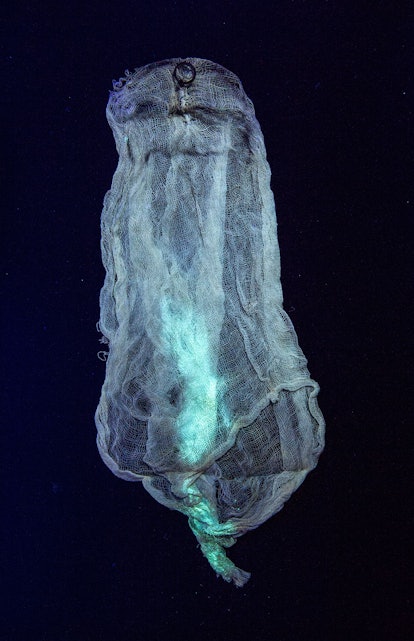Ghosts in the Machines

The artist Tony Oursler made his reputation by using modern technology—animation, video, lighting—to create a convincing, creepy supernatural aura. But at the basis of that arty voodoo was always his ever-growing collection of real artifacts of the occult and spiritual, which he has shaped, with the curators Tom Eccles and Beatrix Ruf, into a book and an exhibition, Imponderable: the Archives of Tony Oursler, at the LUMA Foundation in Arles, France, that runs through September 2015. Here, he sheds light on a few of his favorite ghoulish objects.
This is a very early George Adamski photograph of a UFO, from 1952. Adamski’s work was pioneering in helping to visualize what alien crafts might look like.”
Photo courtesy of the artist.
“Ectoplasm is an inter-dimensional substance said to appear during séances. This is the only example I’ve ever seen and I was lucky enough to find it some years ago at auction. It was used in a debunking display; this particular specimen was known to be fluorescent in the dark, so when I photographed it I used a black light.”
Photo courtesy of the artist.
“One of the mediums from the Goligher circle, a turn of the 20th century spiritualist group in Ireland, documented presentations of ectoplasm, a substance that exudes from the body during a trance. Between 1914 and ’20, William Crawford carried out a series of experiments with the group with very impressive ectoplasmic results.”
Photo courtesy of the artist.
“The power dynamic between hypnotists and the hypnotized has many implications. It’s rare to see this practice as popular entertainment, but here is a 1965 Portuguese stage show featuring the hypnotist ‘Aurea.”
Photo courtesy of the artist.
“My grandfather Fulton Oursler is mostly known as a writer of mysteries, as well as religious texts. But here is a stock poster, with his name on it, that was available for magicians to use at various venues. This image captured my imagination as a child.”
Photo courtesy of the artist.
“Franz Mesmer is a key figure in my project. His influence and position has changed enormously through the years; his theory of animal magnetism, although debunked, generated significant progress in the nascent field of psychiatry, as well as biology. He is a great example of how failure can be a different kind of success.”
Photo courtesy of the artist.
“Pareidolia, which is when you see things where they may not be, is a poetic neurological phenomenon and one of my favorite subjects. Here’s a postcard, from Switzerland in 1931, of a manipulated photograph titled ‘Snow ghosts in the forest.’ It speaks for itself.”
Photo courtesy of the artist.
“Much of the materials in this book written by my grandfather Fulton Oursler under the pseudonym Samri Frikell is the basis for the 4D film which The Luma Foundation produced in conjunction with the publication of my archive. The fascinating friendships and rivalries and battling belief systems between Fulton, Author Conan Doyle, Houdini, and the medium Mina Crandon form the core of the narrative.”
Photo courtesy of the artist.